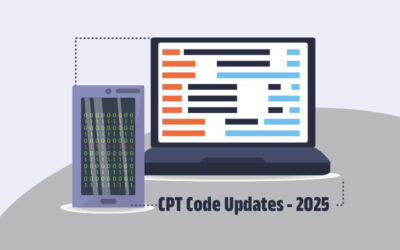The expansion of diagnosis codes with ICD-10 makes the endocrinology medical coding process more complex as this specialty involves a wide array of diagnoses and procedures. Endocrinology providers should have a better knowledge about the endocrine system and much more detailed documentation to choose the most appropriate codes. Specificity is very important when it comes to data quality, medical necessity and reimbursement. Here are some effective tips for endocrinologists to prepare well for ICD-10 coding and avoid claim denials or drop in reimbursement.
Some of the crucial diagnoses in this specialty and their coding are as follows.
Diabetes
In order to select the correct ICD-10 code for diabetes, your documentation should include the following:
- Identify the type
- Clarify any cause and relationship with other conditions
- Specify whether any organ system is affected, any complications, and long-term use of insulin for type II diabetes
- Details about insulin underdosing or overdosing as a result of an insulin pump malfunction (if it occurred)
- Underlying condition, drug or chemical responsible for secondary diabetes
- Distinguish whether diabetes is accompanied by ‘hypo’ or ‘hyper’ glycemia and state if hypoglycemia is or is not causing a coma
The basic ICD-10 codes for diabetes mellitus are as follows:
- E08: Diabetes mellitus due to underlying condition
- E09: Drug or chemical induced diabetes mellitus
- E10: Type 1 diabetes mellitus
- E11: Type 2 diabetes mellitus
- E13: Other specified diabetes mellitus
These codes are further elaborated according to the varying characteristics of diabetes mellitus. Some examples are:
- E08.0: Diabetes mellitus due to underlying condition with hyperosmolarity
- E08.00: Diabetes mellitus due to underlying condition with hyperosmolarity, without nonketotic hyperglycemic-hyperosmolar coma (NKHHC)
- E08.01: Diabetes mellitus due to underlying condition with hyperosmolarity, with coma
- E08.1: Diabetes mellitus due to underlying condition with ketoacidosis
- E08.10: Diabetes mellitus due to underlying condition with ketoacidosis, without coma
- E08.11: Diabetes mellitus due to underlying condition with ketoacidosis, with coma
Also, you are required to report additional codes to specify any underlying conditions, insulin use, specific stage of chronic kidney disease, exact site of any diabetic ulcer (anatomical location and laterality) and severity, poisoning due to drug or toxin, or specific drug or toxin that causes the adverse effect. This is why detailed documentation with aforementioned components is essential.
Malignant Neoplasm
For coding malignant neoplasm, you should include the following into the documentation such as:
- Identify the site (for example, cortex, medulla, cerebellum)
- Specify the morphology (malignant, primary/secondary)
- Indicate the stage as well as any metastatic site
- State any related exposure to smoke like second hand smoke
- Details if the patient presented for treatment related for neoplasm
There is more number of codes for malignant neoplasm in ICD-10, which are:
- C71.6: Malignant neoplasm of cerebellum
- C74.00: Malignant neoplasm of cortex of unspecified adrenal gland
- C74.01: Malignant neoplasm of cortex of right adrenal gland
- C74.02: Malignant neoplasm of cortex of left adrenal gland
- C74.10: Malignant neoplasm of medulla of unspecified adrenal gland
- C74.11: Malignant neoplasm of medulla of right adrenal gland
- C74.12: Malignant neoplasm of medulla of left adrenal gland
- C74.90: Malignant neoplasm of unspecified part of unspecified adrenal gland
- C74.91: Malignant neoplasm of unspecified part of right adrenal gland
- C74.92: Malignant neoplasm of unspecified part of left adrenal gland
Endocrine and Metabolic Disorders
Your documentation should include the following for correctly coding endocrine and metabolic disorders.
- State the specific disorder, disease, defect, deficiency or syndrome
- Identify any underlying condition
- Specify the significance of any abnormal lab findings
- Give details on disorders such as being congenital, hereditary, primary, idiopathic, secondary, pseudo and familial if applicable
For metabolic disorders, you should specify the amino acid, carbohydrate, or lipid enzyme deficiency that contributes to the disorder. The ICD-10 codes for endocrine and metabolic disorders are as follows
- E25.0: Congenital adrenogenital disorders associated with enzyme deficiency
- E25.8: Other adrenogenital disorders
- E25.9: Adrenogenital disorder, unspecified
- E30.0: Delayed puberty
- E34.3: Short stature due to endocrine disorder
- E23.0: Hypopituitarism
- E30.1: Precocious puberty
- E30.8: Other disorders of puberty
The code E23.0 can be used to report both panhypopituitarism and pituitary dwarfism.
Cushing’s syndrome
Document the specific type and cause of Cushing’s disease for correct coding. Unlike ICD-9 (with a single code for Cushing’s syndrome), ICD-10 has number of codes for this condition.
- E24.0: Pituitary-dependent Cushing’s disease
- E24.3: Ectopic ACTH syndrome
- E24.8: Cushing’s syndrome, other
- E24.2: Drug-induced Cushing’s syndrome
- E24.4: Alcohol-induced pseudo-Cushing’s syndrome
- E24.9: Cushing’s syndrome, unspecified
You should state the specific vitamin and/or mineral to assign correct codes for vitamin/mineral or other nutritional deficiencies. Document any symptoms of premature menopause (flushing, sleeplessness, headache or lack of concentration) since this affects coding. If a patient presents with gout, you should document the cause, episode, location and with or without tophi (in case of chronic gout). ICD-10 provides codes for iodine-deficiency-related goiter. You should document those conditions properly to report them using the correct codes, when applicable.
Endocrinologists may use the electronic health record or EHR system to tackle the increased complexity with ICD-10 to certain extent. If you have already implemented such a system, make sure that your templates are updated for the ICD-10 coding system. In addition to this, endocrinologists should coordinate with their medical billing and coding services, to make sure that a ICD 10 trained Coder is reviewing all codes to ensure proper documentation and correct coding.




